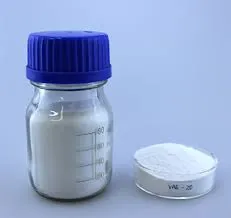
دسامبر . 11, 2024 10:30 Back to list
Exploring the Role of Latex Bonding Agents in Construction and Adhesive Applications
Understanding Latex Bonding Agents Their Role and Importance in Construction
Latex bonding agents are integral components in the realm of construction and materials science. They serve as effective adhesives that enhance the performance of various building materials, particularly in applications involving concrete, mortar, and plaster. This article will delve into the properties, applications, benefits, and limitations of latex bonding agents, providing a comprehensive overview of their significance in the construction industry.
What Are Latex Bonding Agents?
Latex bonding agents are liquid products composed primarily of water and synthetic rubber latex. These agents act as an intermediary between surfaces, facilitating the adhesion of different materials. The primary function of these agents is to create a strong bond between old and new concrete, as well as to improve the overall durability and workability of construction mixtures. They can be used in a variety of applications, including residential, commercial, and industrial construction projects.
Properties of Latex Bonding Agents
One of the key characteristics of latex bonding agents is their excellent adhesion properties. They effectively bond to a wide range of substrates, including concrete, masonry, and wood, making them versatile options for different construction needs. Additionally, these agents exhibit flexibility and water resistance, which are crucial in applications exposed to moisture or other environmental factors. The clarity of the dried film is another attractive feature, ensuring that the aesthetics of the finished product are not compromised.
Moreover, latex bonding agents improve the workability of mixtures, making them easier to apply. They also enhance the tensile strength and resistance to cracking of mortars and concretes, resulting in longer-lasting constructions. These properties make latex bonding agents ideal for use in patching materials, resurfacing compounds, and tile adhesives.
Applications in Construction
Latex bonding agents are commonly used in a variety of construction applications. A significant use is in the repair and resurfacing of existing concrete surfaces. When applied as a bonding agent in patching compounds, they ensure that the new material adheres strongly to the old surface, preventing delamination and increasing durability.
latex bonding agent

In tiling applications, latex bonding agents play a critical role in adhering tiles to various substrates. They enhance the bond strength and flexibility necessary to accommodate slight movements that can occur in building structures. Furthermore, in plastering applications, latex bonding agents are used to improve the adhesion of plaster to concrete and masonry surfaces, resulting in a smoother and more durable finish.
Benefits of Using Latex Bonding Agents
The benefits of using latex bonding agents in construction are manifold. They provide enhanced adhesion, flexibility, and durability, which are essential for the longevity of construction projects. Moreover, they can simplify the mixing processes, as they are typically added directly to other materials without requiring extensive preparation.
Using latex bonding agents can also lead to cost savings over time. By improving the performance of materials, they can reduce the need for repairs and maintenance, ensuring that projects remain intact for longer periods. Additionally, the ease of application associated with these agents can lead to savings in labor costs and time during the construction process.
Limitations to Consider
While latex bonding agents offer numerous advantages, there are also limitations to consider. For instance, they may not perform well in extreme temperature conditions, which can affect their effectiveness. Additionally, if not applied correctly, issues such as bubbling or improper adhesion can arise.
Furthermore, some latex bonding agents may require a specific drying time before being coated with other materials, which can prolong project timelines. It is vital for construction professionals to be aware of these factors and choose the right type of bonding agent for their specific applications.
Conclusion
In conclusion, latex bonding agents are crucial in modern construction, offering improved adhesion, flexibility, and durability. Their applications span a wide range of projects, from repairing and resurfacing concrete to enhancing tile adhesion. By understanding their properties, benefits, and limitations, construction professionals can make informed decisions that lead to successful and long-lasting results in their projects. As the industry continues to evolve, the role of latex bonding agents will remain significant, contributing to the performance and integrity of building materials across various applications.
-
Unlocking the Benefits of HPMC Products: A Gateway to Versatile Applications
NewsAug.07,2025
-
Unleashing the Potential of HPMC Ashland: A Comprehensive Look
NewsAug.07,2025
-
Tile Bonding Cellulose: The Key to Superior Adhesion and Durability
NewsAug.07,2025
-
Hydroxypropyl Methylcellulose Powder: The Versatile Component in Modern Pharmaceuticals
NewsAug.07,2025
-
Hydroxyethyl Cellulose: The Versatile Solution for Various Industries
NewsAug.07,2025
-
Hydroxyethyl Cellulose (HEC): The Versatile Polymer for Various Applications
NewsAug.07,2025







